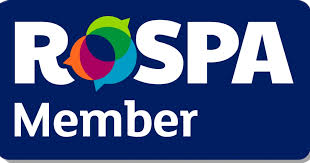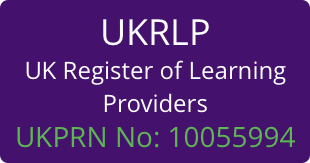
Successful staff onboarding is crucial for setting the stage for a productive and positive work experience. Here are some tips to ensure a successful staff onboarding process:
Onboarding Plan
Develop a comprehensive onboarding plan that covers all essential aspects, including admin, induction, training, introductions, and resource allocation. Have a structured timeline to ensure a smooth transition for new employees.
Communicate Early
Employee onboarding ideally begins before the candidate starts work, even before their first day. Starting the onboarding process early allows for a smooth transition into the company and helps new employees feel prepared and welcomed. By providing information and resources ahead of time, candidates can familiarise themselves with the organisation, its culture, policies, and procedures.
Here are a few reasons why starting onboarding before the first day is beneficial:
- Efficiency: Pre-onboarding activities, such as completing paperwork, setting up IT systems, and reviewing company policies, can be done in advance. This saves time on the first day and allows employees to focus on other important aspects of their new role.
- Engagement: Initiating onboarding early demonstrates that the organisation is invested in the employee’s success and values their contribution. It helps create a sense of anticipation and engagement before the official start date, increasing the likelihood of a positive employee experience.
- Preparation: Providing relevant information and resources ahead of time helps new hires prepare mentally and emotionally for their new role. They can familiarise themselves with the company’s mission, values, organisational structure, and team dynamics, which can ease any initial anxiety or uncertainty.
- Relationship Building: Pre-onboarding can facilitate early connections with colleagues and supervisors. New hires may have the opportunity to virtually meet their team members, mentors, or assigned buddies before they start, fostering a sense of belonging and support from the outset.
However, it’s important to strike a balance. Pre-onboarding should not overwhelm new hires with an excessive amount of information or tasks. A combination of pre-onboarding and onboarding activities ensures a holistic and effective transition for new employees.
Prepare the Workspace
Ensure that the workspace is ready for the new employee’s arrival. This includes setting up their computer, email account, access badges, and any other tools or equipment they may need to perform their duties.
Assign a Buddy or Mentor
Pair the new employee with an experienced colleague who can serve as a mentor or buddy during the onboarding period. This person can answer questions, provide guidance, and help the new employee acclimatise to the company culture.
Provide a Comprehensive Orientation
Conduct a thorough orientation session to introduce new hires to the company’s mission, values, policies, and procedures. Cover essential topics such as benefits, safety guidelines, IT protocols, and any relevant legal or compliance information.
Cover Compliance Training Effectively and Efficiently
Online compliance training, as opposed to classroom training, offers several advantages when it comes to onboarding employees:
- Consistency: With online compliance training, you can ensure a consistent learning experience for all employees. The content, format, and delivery of the training are standardised, reducing the risk of information being mis-communicated or omitted. This consistency helps maintain compliance standards across the organisation and minimises the potential for legal and regulatory issues.
- Cost-Effectiveness: Traditional in-person compliance training often involves significant expenses, such as hiring trainers, arranging venues, providing printed materials, and accommodating travel costs. Online training eliminates these expenses and also reduces the amount of time required to deliver the training.
- Tracking and Reporting: Most online compliance training platforms provide built-in tracking and reporting capabilities. You can monitor employees’ progress, track completion rates, and gather data on their performance. This feature enables you to maintain comprehensive records of their compliance and professional development, which can be crucial for demonstrating compliance with regulatory requirements during audits or legal proceedings.
- Timely Updates: Compliance regulations and requirements evolve over time. Online compliance training allows organisations to easily update training materials to reflect the most current regulations and industry practices. This ensures that employees receive accurate and up-to-date information, reducing the risk of non-compliance due to outdated training content.
If your implementing or developing your use of online learning take a look at Top Tips for an Online Learning Content Strategy
Offer Job-specific Training
Provide comprehensive training that is tailored to the new employee’s role and responsibilities. This training should cover both technical skills and any specific tools, software, or processes they will be using.
Encourage Relationship Building
Facilitate opportunities for the new employee to interact with their team members and other colleagues. Organise team-building activities or social events to foster connections and a sense of belonging.
Set Clear Expectations
Clearly communicate performance expectations, goals, and key performance indicators to the new employee. Provide them with a clear understanding of what is expected of them and how their performance will be evaluated.
Provide Ongoing Support
Offer continuous support to new hires even after the initial onboarding period. Check in with them regularly to address any questions or concerns, provide feedback, and ensure they have the resources they need to succeed.
Seek Feedback
Encourage new employees to provide feedback on their onboarding experience. This feedback can help identify areas for improvement and enhance the onboarding process for future hires.
Remember, successful onboarding goes beyond the first few days or weeks. It is an ongoing process that helps new employees feel valued, supported, and empowered to contribute their best to the organisation.







 UK: 0844 854 9218 | International: +44 (0)1488 580017
UK: 0844 854 9218 | International: +44 (0)1488 580017








